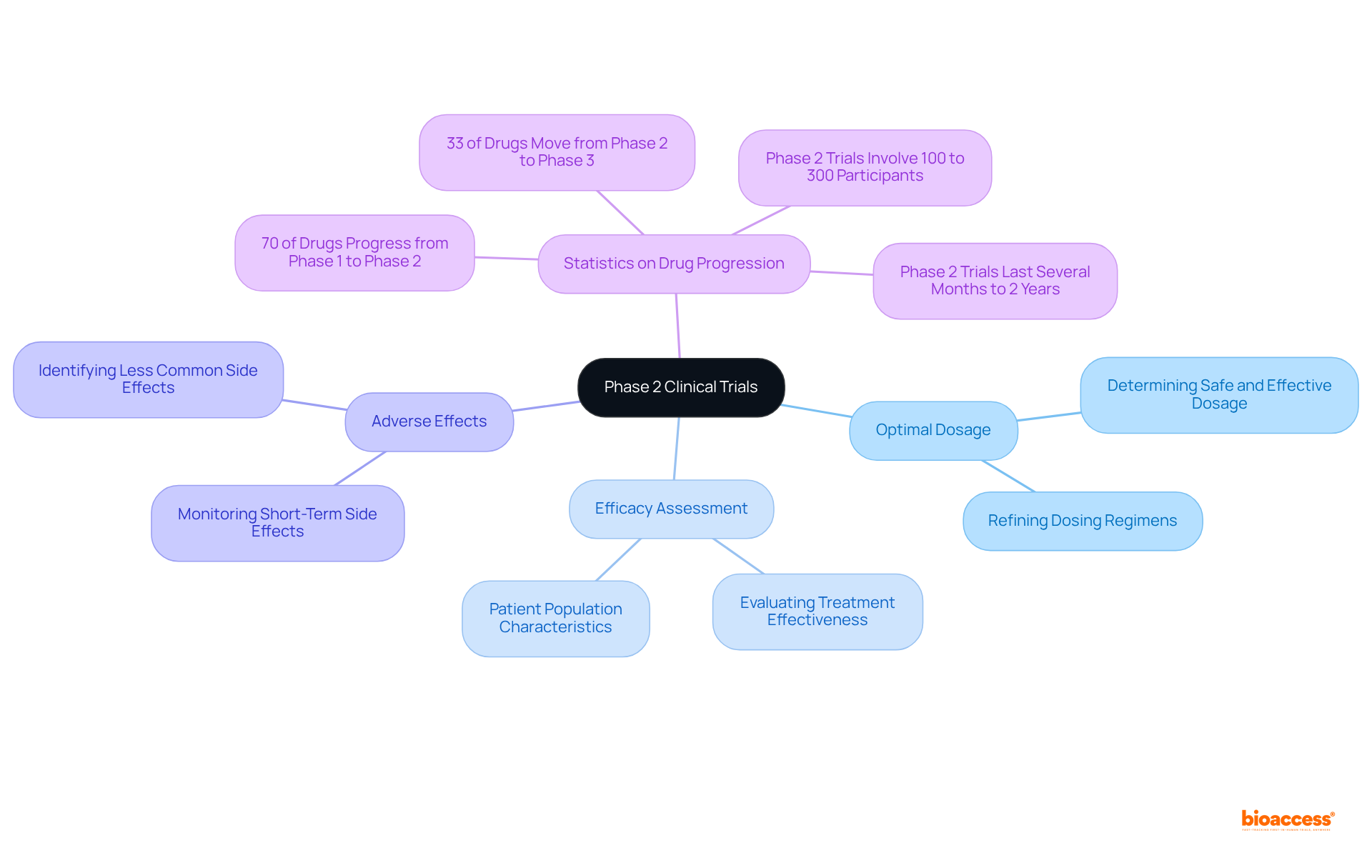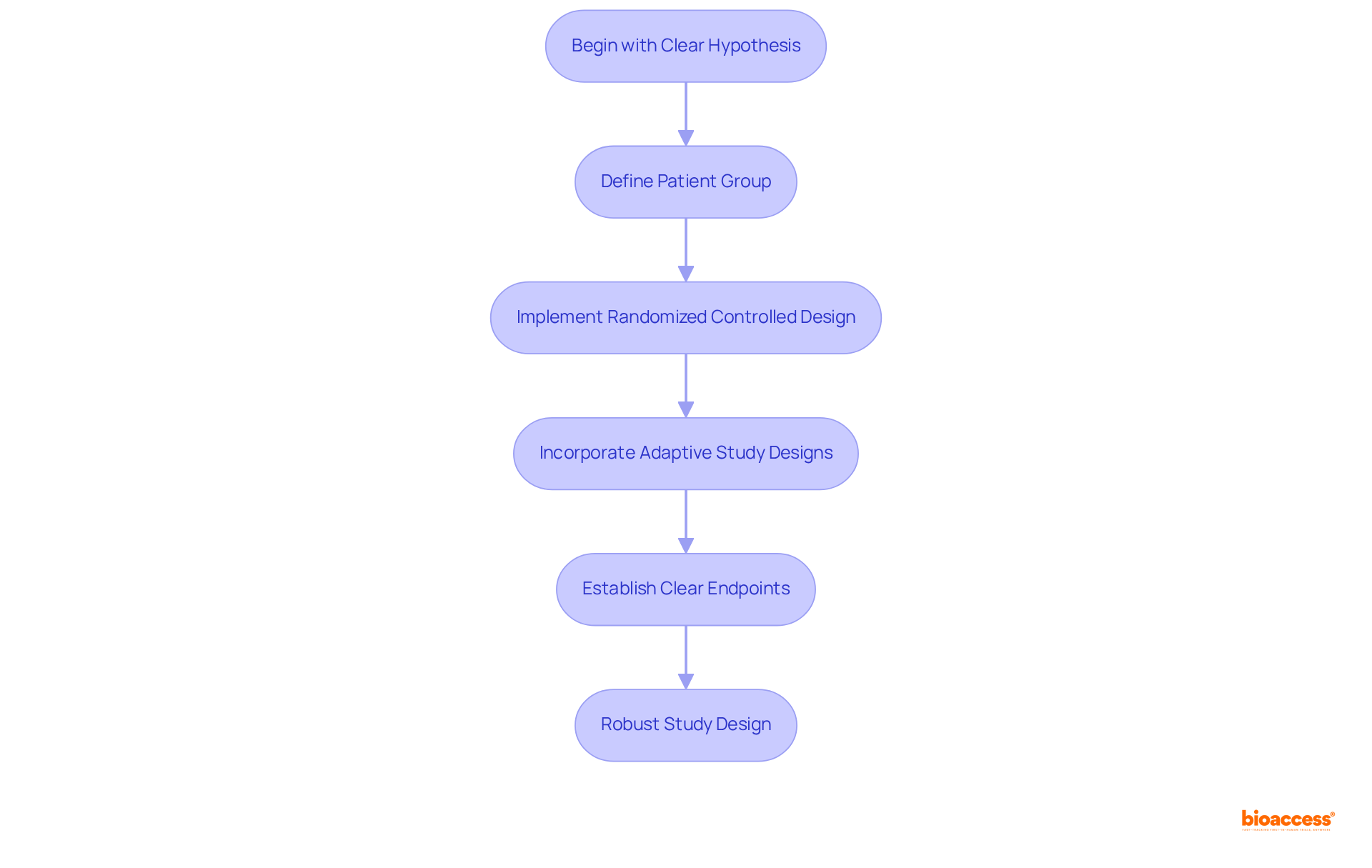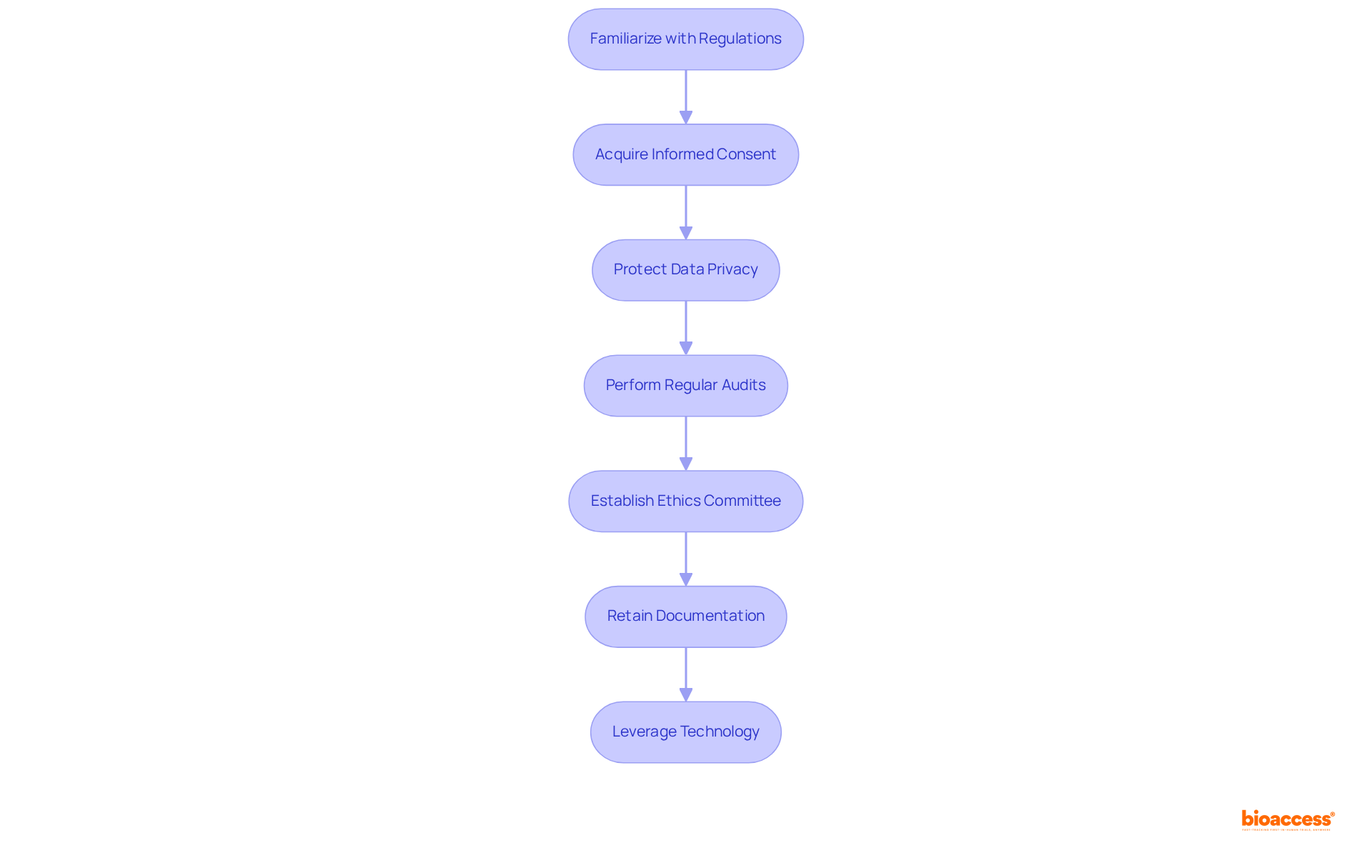


This article delves into effective strategies for mastering Phase 2 clinical research, underscoring the significance of:
It outlines the key objectives of Phase 2 trials, such as:
while also highlighting practical recruitment methods. Furthermore, it emphasizes the necessity of adhering to ethical guidelines, which is crucial for enhancing study credibility and safeguarding participant safety.
Phase 2 clinical trials represent a critical juncture in the drug development process. Here, the focus shifts from mere safety assessments to evaluating the effectiveness of treatments in larger patient populations. As the stakes rise, understanding the intricacies of designing these trials becomes essential for researchers aiming to navigate the complexities of drug efficacy and safety.
However, the path to successful Phase 2 trials is fraught with challenges, including:
What strategies can researchers employ to ensure their trials not only meet scientific objectives but also adhere to ethical standards and maximize participant engagement?
Phase 2 clinical research is pivotal in the medication development process, focusing primarily on evaluating the effectiveness and safety of a treatment following the initial safety confirmation in Stage 1 studies. These studies in phase 2 clinical research aim to:
Typically, phase 2 clinical research involves a larger cohort than Stage 1, ranging from 100 to 300 participants, which allows for a more comprehensive understanding of the treatment's impact. This increased sample size is essential for observing less common side effects in phase 2 clinical research, thus playing a critical role in determining the drug's overall safety profile.
Phase 2 clinical research can last from several months to two years, providing ample time for researchers to gather vital information. By clearly outlining these objectives, researchers can tailor their methodologies to capture the most relevant data, ultimately facilitating the transition to Stage 3 studies.
Recent statistics reveal that approximately 70% of drugs progress from Stage 1 to phase 2 clinical research, while about 33% move beyond phase 2 clinical research to Stage 3, highlighting the significance of this phase in the drug development timeline. Furthermore, successful phase 2 clinical research studies pave the way for the initiation of Stage 3 studies, where larger groups are assembled to further evaluate the treatment's safety and effectiveness. Additionally, Contract Research Organizations (CROs) play a crucial role in supporting phase 2 clinical research, offering expertise and resources that enhance the efficiency and effectiveness of the process.

To create effective Phase 2 studies, researchers must begin with a clear hypothesis and a well-defined patient group. A randomized controlled study design is essential; it mitigates biases and enhances the validity of results. Additionally, incorporating adaptive study designs allows for modifications based on interim results, optimizing resource utilization and ensuring participant safety.
Establishing clear endpoints—both primary and secondary—that align with the study's objectives is also crucial. By meticulously planning the study design, researchers can ensure that their research is robust and capable of yielding the necessary data to support further development.

Implementing effective recruitment strategies is crucial for the success of phase 2 clinical research trials. Researchers must adopt a multifaceted strategy, utilizing diverse channels such as social media, advocacy groups, and healthcare providers to connect with potential participants. Statistics reveal that over 90% of potential individuals are lost before enrollment, with 40-50% lost in the initial stages of recruitment and enrollment. This underscores the urgent need for innovative outreach methods.
Crafting clear and compelling messaging about the trial's objectives and potential benefits significantly enhances interest and engagement. Furthermore, with 75% of individuals unaware of clinical studies as a treatment option, forming collaborations with local clinics and hospitals can broaden access to various participant groups. Offering incentives, such as travel reimbursement or compensation for time, can further encourage participation.
Real-world examples indicate that sites employing sponsor-connected enrollment applications successfully move over 60% of eligible patients through the recruitment funnel. Moreover, the financial implications of recruitment delays can cost sponsors between $600,000 and $8 million per day, highlighting the urgency of enhancing recruitment strategies. By implementing a thorough recruitment approach, researchers can boost enrollment rates and ensure a diverse demographic, ultimately improving the quality and relevance of clinical study results.

Ensuring adherence to regulatory and ethical standards is paramount in phase 2 clinical research. Researchers must familiarize themselves with the relevant regulations, such as those set forth by the FDA or EMA, and adhere to Good Clinical Practice (GCP) guidelines, including the ICH E6(R2) standard. This involves:
By prioritizing compliance, researchers not only protect participants but also enhance the credibility of their findings, facilitating smoother regulatory approvals and advancing medical innovations. Non-compliance can lead to severe consequences, including regulatory action, study termination, and financial penalties. Additionally, leveraging technology, such as modern EMR systems, can significantly reduce compliance risks by up to 85%. Continuous communication with regulatory authorities is essential for maintaining compliance and addressing safety concerns.

Phase 2 clinical trials represent a pivotal juncture in the drug development process, concentrating on the evaluation of both efficacy and safety of treatments following initial safety confirmations in Phase 1. By determining optimal dosages, assessing specific patient demographics, and identifying potential adverse effects, these trials are instrumental in ensuring that promising therapies progress to subsequent stages of development. The insights garnered during this phase not only inform the safety profiles of drugs but also lay the foundation for larger Phase 3 studies.
This article has explored essential strategies for mastering Phase 2 clinical research, highlighting the significance of:
By employing randomized controlled designs, integrating adaptive methodologies, and leveraging diverse recruitment channels, researchers can markedly enhance the quality and relevance of their findings. Moreover, a thorough understanding and compliance with regulatory guidelines guarantee that trials are conducted ethically and responsibly, thereby reinforcing the credibility of the research outcomes.
As the clinical research landscape continues to evolve, the importance of Phase 2 trials remains paramount. By emphasizing robust study designs and innovative recruitment strategies, researchers can not only boost enrollment rates but also ensure diverse representation within their trials. This dedication to excellence in Phase 2 clinical research is crucial for propelling medical innovation and ultimately delivering effective treatments to those in need. By embracing these best practices, the path for successful drug development will be paved, benefiting both the medical community and patients alike.
What are Phase 2 clinical trials?
Phase 2 clinical trials are a critical stage in the medication development process that focus on evaluating the effectiveness and safety of a treatment after initial safety confirmation in Stage 1 studies.
What are the main objectives of Phase 2 clinical trials?
The main objectives of Phase 2 clinical trials include establishing the optimal dosage, assessing the medication's efficacy within a specific patient group, and identifying potential adverse effects.
How many participants are typically involved in Phase 2 clinical trials?
Phase 2 clinical trials typically involve a larger cohort than Stage 1, ranging from 100 to 300 participants.
Why is the sample size important in Phase 2 clinical trials?
The increased sample size in Phase 2 clinical trials is essential for observing less common side effects, which helps in determining the drug's overall safety profile.
How long do Phase 2 clinical trials usually last?
Phase 2 clinical trials can last from several months to two years, allowing researchers to gather vital information.
What percentage of drugs progress from Stage 1 to Phase 2 clinical trials?
Approximately 70% of drugs progress from Stage 1 to Phase 2 clinical trials.
What percentage of drugs move beyond Phase 2 clinical trials to Stage 3?
About 33% of drugs move beyond Phase 2 clinical trials to Stage 3.
What role do Contract Research Organizations (CROs) play in Phase 2 clinical trials?
Contract Research Organizations (CROs) provide expertise and resources that enhance the efficiency and effectiveness of the Phase 2 clinical research process.